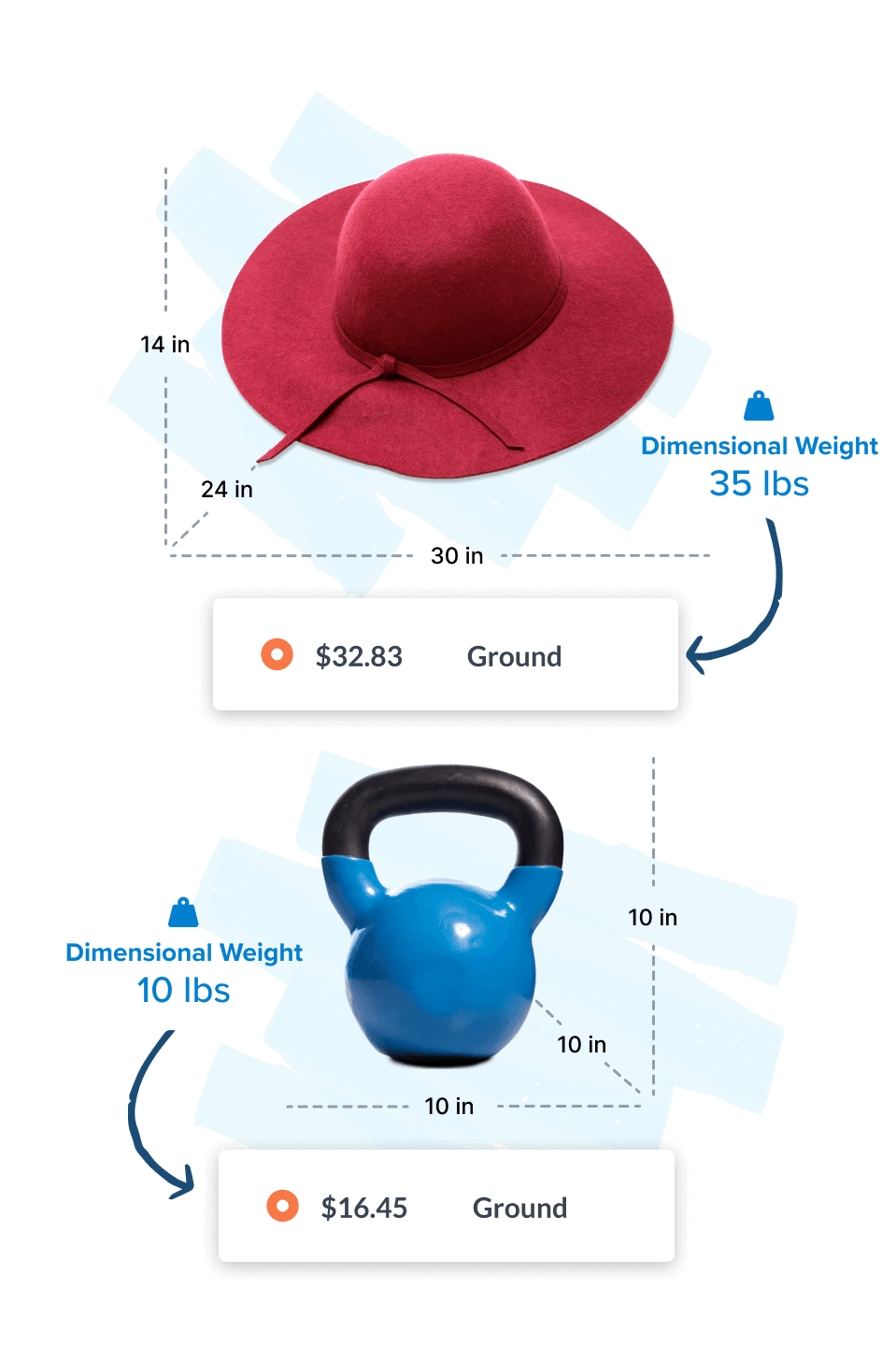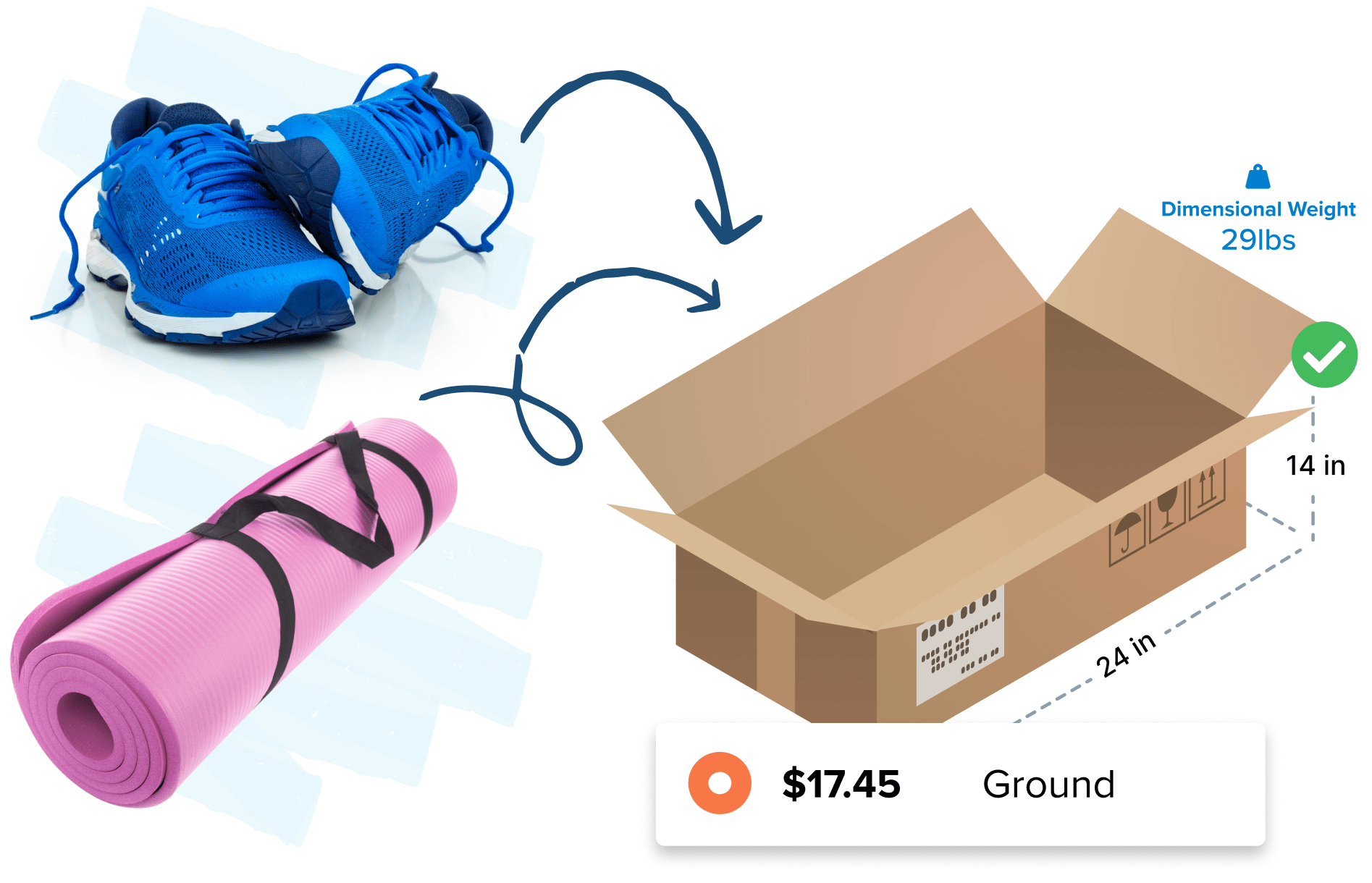Shipping is the second largest expense for online retailers and can make up as much as 70% of a company’s total fulfillment costs. As online shopping continues to explode, so does the need for efficient and cost-effective shipping strategies. One critical aspect of this is understanding and calculating dimensional weight. If you’re not familiar with the term, you’re not alone — but understanding dimensional shipping can save your business significant money and headaches.
In this blog, we’ll dive into what dimensional weight is, why it matters, and how you can calculate it accurately to optimize your shipping strategy.
What is Dimensional Weight?
Dimensional weight, also known as volumetric weight, is a pricing technique shipping carriers use to account for the amount of space a package occupies, rather than just its actual weight. This concept is especially important when shipping lightweight, bulky items that take up more space in a delivery vehicle than a heavier, compact item.
Carriers use it to ensure that shipping costs reflect the volume of space a package requires, thereby optimizing their capacity and efficiency. For online businesses, understanding how to calculate and manage dimensional weight is crucial to avoid unexpected shipping costs and to provide accurate pricing to customers at checkout.
How to Calculate Dimensional Weight for Shipments?
Carriers like UPS, FedEx, DHL, and others rate packages by a combination of factors. Aside from distance, the most significant is weight. However, they do not use actual package weight for all shipments but rather the greater of actual weight, also called dead weight, and dimensional weight.
Dimensional weight significantly impacts shipping rates. With consumers’ rising expectations of free shipping, retailers often struggle to balance competitive pricing with maintaining profitability.
Calculating dimensional weight helps merchants understand their shipping expenses better and offers an opportunity to adjust packaging strategies, negotiate better rates, and improve overall cost efficiency.
Formula to Calculate Dimensional Weight
The formula for dimensional weight calculation varies slightly depending on the carrier and the unit of measurement used. However, the basic formula is:
Dimensional Weight = (Length x Width x Height) ÷ Dimensional Factor
Understanding the Components of Dimensional Weight Shipping
Length, Width, Height: Measure the package dimensions in inches or centimeters. It’s important to use the longest points for each dimension, including any protrusions.
Dimensional Factor: This is a standard number set by carriers that converts the volume of a package into its dimensional weight. Common dimensional factors are:
- 139 for domestic shipments in the US (inches/pound)
- 166 for international shipments (inches/pound)
- 5000 for metric calculations (centimeters/kilogram)
Example Calculation:
Imagine you’re shipping a package with the following dimensions: 20 inches long, 15 inches wide, and 10 inches high.
For a domestic shipment in the US:
Dimensional Weight = (20 x 15x 10) ÷ 139 = 21.6 pounds
Always round up to the nearest whole number, so the dimensional weight would be 22 pounds. If the actual weight of the package is less than 22 pounds, carriers will charge based on the dimensional shipping.

Can Dimensional Packing Solutions Reduce Shipping Costs?
A dimensional packing solution becomes essential for optimizing packaging to reduce dimensional weight and lower shipping costs. By selecting the right packaging for each order, you can reduce void fill, prevent damage during transit, and improve customer satisfaction.
ShipperHQ offers a robust dimensional packing solution as part of its shipping management platform. It helps you automatically determine the best packing configuration for any combination of products in the cart. You can also create packing rules to process specific products differently based on unique conditions that you designate.
Sign up for a free 15-day trial or chat with our shipping expert to learn how dimensional packing can take your shipping strategy to the next level.
FAQs About Calculating Dimensional Weight
1. What is dimensional weight, and why is it important in shipping?
Dimensional weight (DIM weight) is a pricing method used by carriers that considers a package’s size relative to its weight. It ensures shippers pay fairly for the space a package occupies during transit.
2. How do you calculate dimensional weight?
To calculate DIM weight, multiply the package’s length, width, and height, then divide the result by the carrier’s DIM factor. Each carrier may use a different DIM factor, so it’s important to verify.
3. Why do carriers use dimensional weight pricing?
Dimensional weight pricing helps carriers optimize space utilization in their vehicles and ensures that lightweight but bulky packages are charged appropriately for the space they occupy.
4. How can businesses reduce dimensional weight shipping charges?
Follow these five tips for reducing your package DIM weight and saving on shipping.
- Optimize Packaging: Use packaging that fits the product tightly, minimizing empty space and reducing the need for additional filler materials, which helps cut down on dimensional weight.
- Choose the Right Packaging Material: Select lightweight yet durable materials to maintain product safety while keeping the overall package weight as low as possible.
- Consolidate Shipments: Combine multiple items into one package to reduce the number of shipments, ultimately lowering dimensional weight charges for each individual package.
- Utilize Advanced Packing Techniques: Use efficient packing techniques like nesting or stacking to maximize space usage and reduce the overall dimensions of the package.
- Negotiate Carrier Contracts: Work with shipping carriers to negotiate better rates and dimensional factor for your business








